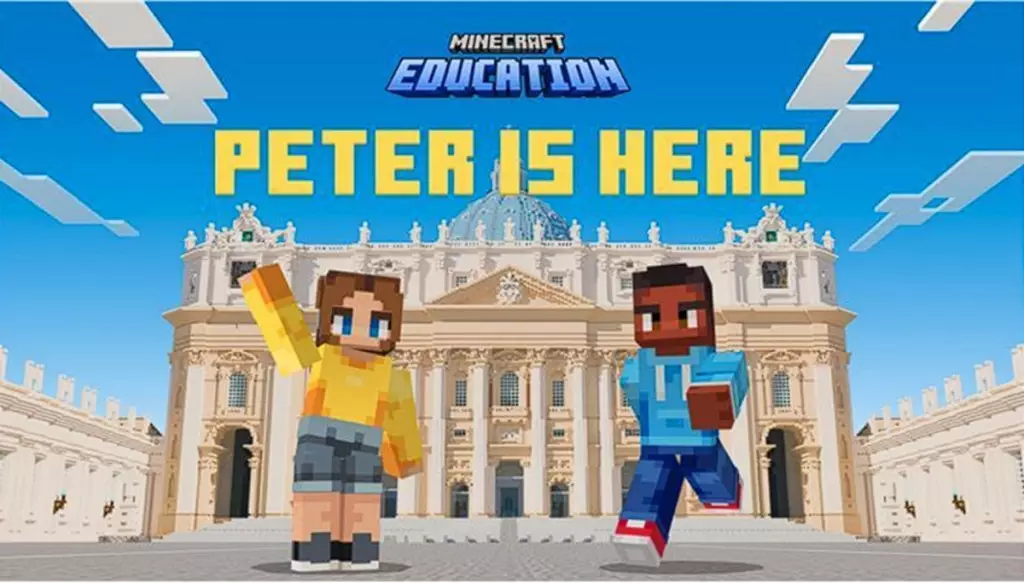St. Peter’s Basilica is not merely a structure of brick and mortar; it represents centuries of history, artistry, and religious significance. As one of the world’s most iconic churches, this magnificent edifice stands in the Vatican, attracting millions from across the globe. Its architectural grandeur and historical narratives have also inspired artists, architects, and historians for generations. Yet, with the passage of time, the need to preserve such landmarks has never been more critical. It is within this context that “Peter Is Here: AI for Cultural Heritage” emerges—a groundbreaking initiative combining technology, history, and educational engagement like never before.
Education Meets Innovation
In collaboration with Microsoft and the Vatican, “Peter Is Here” utilizes the platform of Minecraft to create a unique, immersive learning experience. This innovative approach transforms students into digital caretakers of St. Peter’s Basilica, offering them not just a window into the past, but a hands-on role in its preservation. For the first time, students are encouraged to engage actively with cultural heritage through interactive gameplay, which is as entertaining as it is educational.
By leveraging artificial intelligence (AI) tools within the game, students gain direct insights into the restoration processes that these historic sites undergo. This merging of digital interaction with real-world preservation techniques exemplifies a fresh approach to education that aligns closely with modern technological advancements.
Two Dynamic Learning Paths
“Peter Is Here” offers students two interconnected gameplay modes: Restoration Mode and Exploration Mode. Each mode invites players to delve deeper into the Basilica’s history while engaging in activities that foster critical thinking and problem-solving skills. In Restoration Mode, learners assume the role of the Sanpietrini—the devoted custodians of the Basilica. This interactive experience allows them to engage deeply with the restoration process through simulated AI tools.
The premise is simple yet profound: as students repair the ancient structure, they not only witness the tangible effects of their actions but also gain an understanding of historical architectural styles spanning different eras—from the construction of the Vatican Obelisk in 75 AD to Bernini’s grand Baldachin in 1626. This real-time decision-making not only invigorates the physical structure but also transforms students from passive recipients of information into active participants in cultural preservation.
Bridging the Past with Future Technologies
What makes this initiative even more exciting is its use of cutting-edge digital technology, particularly AI-enhanced digital twins employed in the restoration project. By analyzing extensive photogrammetry data, students can visualize and understand the architectural strategies utilized in different historical contexts. This interplay between gaming and learning is revolutionary, as it harnesses the potential of AI to make historical education engaging and accessible to today’s tech-savvy youth.
Essentially, students are not just playing a game; they are partaking in a transformative experience that aligns historical knowledge with modern scientific methods. They can connect what they learn with contemporary practices in various scientific fields, such as medicine and urban planning, providing a holistic educational perspective.
Hands-On Experience for Meaningful Learning
The hands-on nature of the “Peter Is Here” experience is a key factor in its effectiveness as an educational tool. Students engage with AI tools to assess the damage to structures and determine areas needing repair. Each restoration task introduces them to the architectural styles and construction methods of different eras, offering invaluable context to their work.
Following restoration, students transition to Exploration Mode, which transforms the game into a historical treasure hunt. Players can navigate the Basilica and interact with historical figures, enriching their understanding of the cultural narratives entwined within the edifice. This mode further emphasizes the importance of inquiry and curiosity, crucial traits for any aspiring historian or cultural custodian.
A Global Reach for Cultural Preservation
Importantly, “Peter Is Here” reflects a broader commitment to making cultural heritage accessible to all. By collaborating with organizations like Microsoft and leveraging platforms like Minecraft Education, the initiative stands as a beacon of what digital technology can achieve in the realm of history and education. The project aims not just to preserve the past, but also to inspire future generations to value and safeguard cultural treasures.
This immersive experience culminates in rewarding educational milestones, including a certification that acknowledges the students as honorary preservers of heritage. Such recognition serves not merely as a trophy but as a reminder of their newfound abilities to engage constructively with history using modern tools.
Through initiatives like “Peter Is Here,” we are reminded of our shared responsibility to protect and sustain cultural heritage. As emerging generations navigate a rapidly changing world, the fusion of technology and education offers unprecedented opportunities to cultivate informed and passionate stewards of our collective history.

